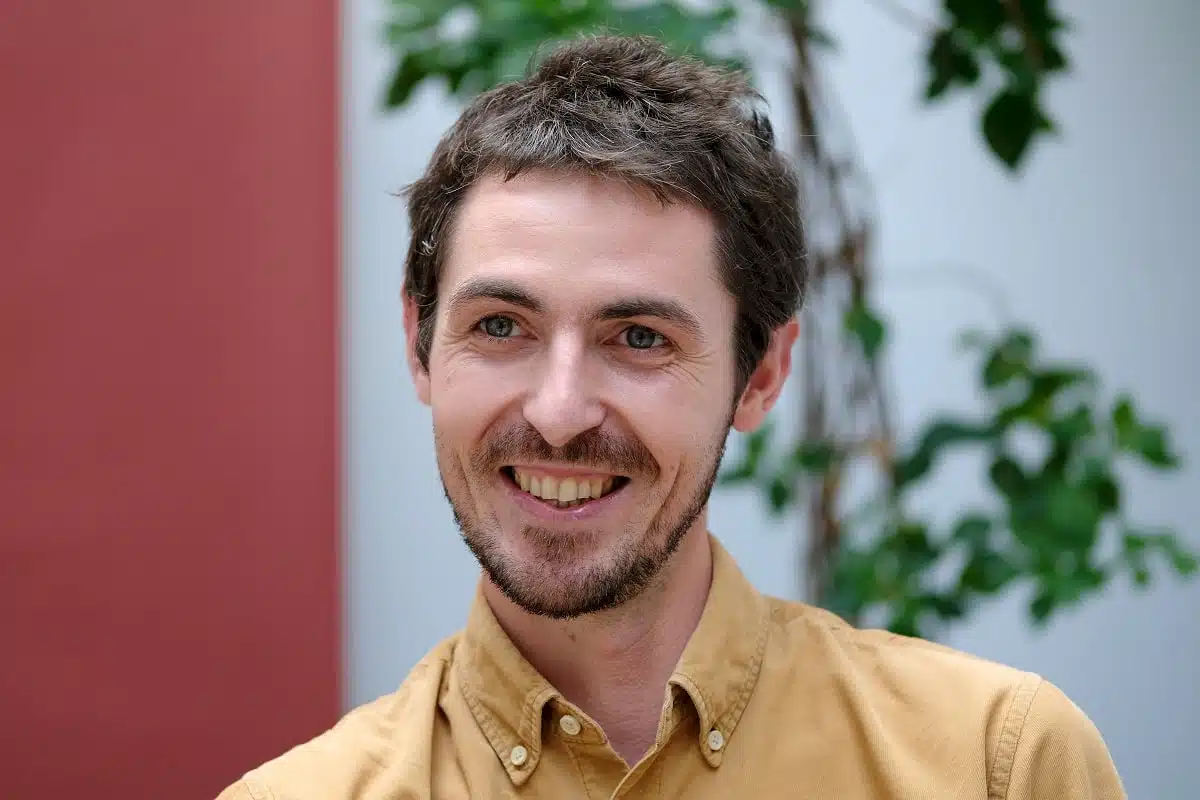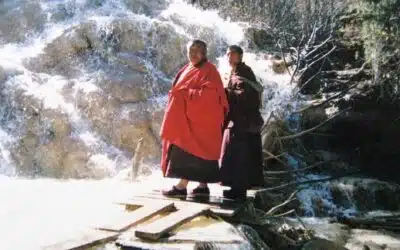The Friend of Good 3

Written By Grégoire Langouet
Blog | General Introduction to Dzogchen | History of Dzogchen | The Dzogchen basics
In ” The Friend of Good 3″, Grégoire talks about the place of the master in some traditions of the ancient near east.
The Friend of Good 3: The Middle East
After the Asian Cradle and the Western World, we now turn to the “Middle East”. At the speed of light, we’ll take a look at the figure and role of the Master, or the “Friend of Good”, in the Eastern Mediterranea and the territories stretching as far as present-day Iran. A brief panorama of the ancient Near East will show us the diversity of the great traditions that were present in these regions, and the centrality of the figure of the Master, almost ignored by modernity and now often synonymous with submission when for so long it was synonymous with… liberation! So what do we know about the spiritual guide in these traditions, and what is their legacy for us today?
Going back in time – but leaving aside the Sumerians, Hittites and Assyrians, and even the Egyptians! -we find ancient Judaism in the lands of Palestine – between Egypt and Babylonia. Sources are scarce, apart from archaeological traces and Torah accounts. We can imagine that the priests of the First Temple (10th-6th century B.C.) played a vital role in the spiritual guidance of the Hebrews of that time, just as they did after the Exile and the return from Babylon during the so-called Second Temple period (6th century B.C.-1st century A.D.).
A kind of hereditary Jewish nobility, the priests, together with the Levites, were responsible for all ritual practices, especially sacrifices and offerings, as well as prayers and the recitation of the Torah and Psalms. The figure of the Rabbi ( רַב, Rav) was not yet attested at that time. Prophetic figures (Abraham, Moses, Elijah, Ezechiel and countless others) were used as inspiration, but these were lost in the mists of time. It wasn’t until the Pharisees (2nd century BC) that the first historical evidence was found. Then came the Sages, including Hillel the Elder and Rabbi Akiva, then Rabbi Shimon bar Yohai and his son Eleazar, important figures in the origins of Kabbalah (קבלה – qabbala) – the Jewish esoteric tradition.
The Kabbalistic master is a spiritual guide who, like all authentic masters, transmits to his disciples through his presence, advice and practice, what he has received from his own master. The tradition is kept alive by this unbroken lineage of blessings that each Master reactivates… since Moses! Spiritual study and practice alternate with retreats and integration into daily life – not to mention strange exorcisms and other angelic possessions. This complete and authentic tradition is still alive and passed on nowadays… and not just in Jerusalem!
“We confide in him or her with complete trust. The more direct and authentic we are, the more beneficial it will be for us in return. The more we reveal ourselves, the more divine reality is revealed. The more we give, the more we receive. As Master Eckhart would later say, “Leave everything – receive everything”
Coming back to our rabbinic sages, one of their contemporaries would become a little more famous than the others – at least for many of us – a rabbi who called God, “abba” (אבא – ἀββα), father: Jesus. Jesus of Nazareth, who became the Christ.
In addition to preaching the end of times, he performs miracles, heals the sick and raises the dead. But more than that, he himself passes through death and rose again, appearing to his disciples to give them his final teachings. The incredible doesn’t stop there: three days after his crucifixion, his body disappears while he is lying in a tomb, leaving only the clothes that covered him: a rainbow body (འཇའ་ལུས)? [1]
During his life, he surrounds himself with disciples who will be called apostles. They all live, pray and eat together, but they don’t work, unlike the other rabbis. They spread the “good news” (εὐ-αγγέλιον – “gospel”): the Messiah all the Jews had been waiting for was indeed here, present among them, in the person of this Jesus; Yeshua. Apostles, evangelists and believers continued the lineage of teaching, and called for constant heartfelt prayer, as Paul did in his first letter to the Thessalonians (“Pray without ceasing” (1 Thess 5:17)).
The Church is structured into communities. The episkopoi keep watch. The most motivated leave as hermits in the deserts of Egypt or Syria. A contemplative life, withdrawn from the world, totally dedicated to God. The figure of the master, the spiritual guide, becomes crucial in order not to give in to the temptations of the demons and to find one’s own spiritual way. We confide in him or her with complete trust. The more direct and authentic we are, the more beneficial it will be for us in return. The more we reveal ourselves, the more divine reality is revealed. The more we give, the more we receive. As Master Eckhart would later say, “Leave everything – receive everything” [2]
In all these cases, it’s about community – a shared form-of-life (koinos bios). This is a fundamental point about these masters and their students: living together. Like the Greek philosophers, rabbis and abbots live with those who receive and put into practice their teachings. It is through his example and by imitation that we perfect ourselves. It is through the presence of the one who is united with God that we learn.
It is this figure of the master, of the abbot, that we still find in monasteries throughout Europe – and he is not in opposition to the priest or the bishops (regular or secular clergy). However, as in almost all traditions, a subtle balance has to be found between, on the one hand, the large institutions which often favor studies and complex collective rituals and, on the other hand, the contemplative life, which is more often lived in solitude or in a family environment.
Such guides were also to be found in Byzantine Christianity, which gave rise to so-called “Orthodox” Christianity. Some of the greatest Christian theologians and contemplatives, such as Gregory of Nyssa, Basil of Caesarea and Gregory of Nazianzus, lived in Cappadocia, in what is now Turkey. They were in no way inferior to their Alexandrian brothers from Egypt – Philo, Clement, Origen and Evagrius – other Christian masters who played a key role in the development and transmission of this tradition.
Evagrius the Pontic theorized the spiritual experiences of desert contemplatives. He was an essential link in the development of monasticism in the West. By eliminating all forms in prayer for the purpose of contemplation, by concentrating the soul and making it impervious to disturbing thoughts – symptoms of spiritual illness – Evagrius sets out a gradual path for the development of the practitioner. He is the archetype of what a “master” will become in Christianity, explaining to his brothers and disciples the main principles of the spiritual path, giving very concrete advice and sharing exercises to put into practice.
Moving further East, we see the spread of Syriac Christianity, known as “Nestorian”. Persia also became Christian, and in China the first missions arrived as early as the 8th century! The Syriac Christianity of the Eastern Church and its spiritual masters were also inspired by Evagrius: John of Dalyatha, Joseph Hazzaya or Babai the Great [3] . In any case, it was these spiritual masters who kept the apostolic succession alive in these places, and thus still made an access to God possible.
As for the ancient Persia we’ve just mentioned, it’s the stuff of fantasy. Their prophet Zarathustra (long known as Zoroaster) fascinates. Even the ancient Greeks believed that they had inherited their most precious teachings from this sage and his successors, the magoi (from whom we derivethe name “magicians”). Of Zoroastrianism and Mazdeism, and of their masters and teachers, we know little except from their texts, the Avesta and its famous Gāthās (dated from around 2000 to 1700 B.C.). We can always fantasize…
But isn’t the most important thing today to return to that which, apart from Judaism, is still very active and alive in terms of mastery and spiritual transmission: the Islamic tradition? That’s for the next episode…
[1] Francis V. Tiso, Rainbow Body and Resurrection, 2016 BACK
[2] German Sermons, comm. and trans. into French by R. Schürmann BACK
[3] For an introduction see : Christoph Baumer, The Church of the East: An Illustrated History of Assyrian Christinianity, 2006; or David Wilmshurst, The Martyred Church. A History of the Church of the East, 2011 BACK
More Posts
A Garland of Light
In “A Garland of Light”, Johanne talks about the way the lineage of the Great Perfection is passed on, since its beginning.
Stories When the Light Fades
In “Stories When the Light Fades”, Mila Khyentse recalls some of his Master’s Jack-o’-lantern stories told at night.
The ground (gzhi)
This article is the first in a new category designed to provide a better understanding of the essential words and concepts of Dzogchen.




